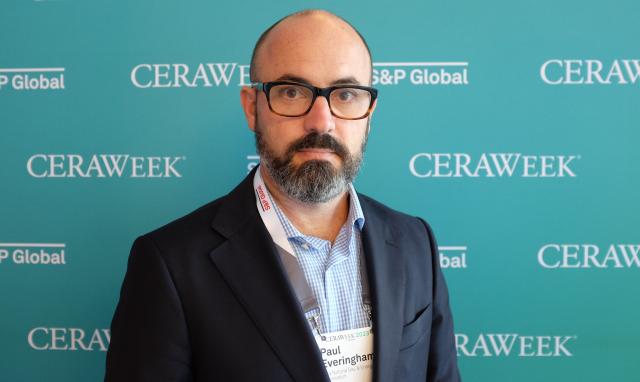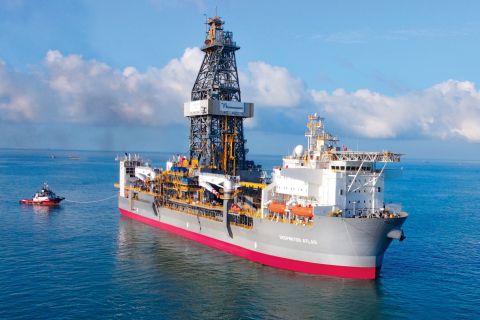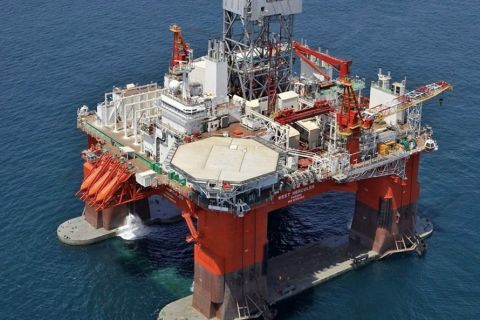
Asia Natural Gas & Energy Association (ANGEA) inaugural CEO Paul Everingham. (Source: Pietro D. Pitts)
ANGEA, a Singapore-based trade association, continues to advocate for Asia gaining access to affordable, reliable and sustainable energy, be it from the U.S., Australia, Qatar — really anywhere, association CEO Paul Everingham told Hart Energy during CERAWeek by S&P Global.
“They’re forced to burn coal and we can give them other options,” said Everingham, who has been CEO of ANGEA, or the Asia Natural Gas & Energy Association since 2022.
“It's on the West [which] has been allowed to burn coal, the affordable easy energy option, for 300 years,” he said March 9 on the sidelines of CERAWeek in downtown Houston.
“And now they’re saying Asia, you can't have that cheap, affordable energy option because the emissions are too big. And [ANGEA’s] saying, let's not lecture them, we’re telling them not to do what we actually did. Let's give them clean, cheaper options.”
That option is gas combined with carbon capture, utilization and storage (CCUS) — although Asia is not there yet, Everingham said.
“We're probably two years away, but we're working towards natural gas with CCUS at a full-cost equating to the price of solar,” Everingham said. Once that’s possible markets will have “changed the entire game and the world meets its emission targets. The end of coal, gas with CCS plus renewables: wind, solar and geothermal, that's a future world we see and we want to be part of the solution, not part of the problem.”
Asia, especially South and Southeast Asia, are emerging economies and will make up about 50% of the world's population soon. Many of these economies will grow at twice the rate of Western economies where energy consumption is expected to plateau before 2030. Growth during 2030 to 2050 is expected to come from Asia, Everingham said.
Attractiveness of U.S. LNG exports
U.S. LNG exports gained greater importance in 2022 in Europe amid the Russia-Ukraine conflict and Moscow’s reduction of its gas exports to the EU.
But, Everingham said going forward that Australia, also a key LNG supplier to the world energy markets, will want to try to keep up with America despite its own headwinds.
“The problem Australia’s got is that America's got these untapped vast reserves, and Australia is sort of almost at a plateau but can keep supplying North and Central Asia for a long time. But all that growth market, someone else needs to do that… so that's really competition between Qatar and the U.S. for those big volumes,” he said.
RELATED
Exclusive: Tellurian’s Souki Says Partners—Not Off-takers—are the Issue
Asia isn’t suffering a lack of gas due to a number of countries’ reserves and capacity, including Bangladesh, Indonesia, Thailand and Vietnam.
Asia “won't be able to totally rely on their own domestic sources,” Everingham said.
But if Australia provides a base for production while the “two big elephants, Qatar and America,” compete to supply Asia, local production can “turn more on and off to keep a real tension in the gas price that suddenly Southeast Asia can afford,” Everingham said.
Asians going where the molecules are
Asian producers —from Tokyo Gas to South Korea’s SK Energy —are going where the molecules are to invest in projects when possible. They’re also looking into LNG in Alaska, the U.S. Lower 48, the Caribbean, Australia, Indonesia and Malaysia, Everingham said.
Everingham said Asian economies in the north, such as China, Korea and Japan, are also eying ammonia as a massive fuel source. And ANGEA – supported by its members, Chevron Corp., ConocoPhillips, Exxon Mobil, JERA, JGC, LNG Japan, Mitsubishi Heavy Industries, Santos, Sumitomo Corp. and Woodside Energy —continue to work with Southeast Asian countries to encourage them to do the same.
Asia also continues to view opportunities in Africa and Latin America — from Mozambique and Angola to Trinidad and Tobago— that have LNG facilities and ammonia and methanol export plants.
RELATED
Trinidad’s Energy Minister Young Talks Gas Production, Venezuela and Atlantic LNG [WATCH]
“Trinidad is definitely talked about openly and actively. People view Trinidad as very real, and they are hopeful about Argentina and Mexico,” Everingham said. “But in LNG, and until you've delivered a cargo, nobody knows you’re for real.”
Recommended Reading
Rystad: More Deepwater Wells to be Drilled in 2024
2024-02-29 - Upstream majors dive into deeper and frontier waters while exploration budgets for 2024 remain flat.
E&P Highlights: April 15, 2024
2024-04-15 - Here’s a roundup of the latest E&P headlines, including an ultra-deepwater discovery and new contract awards.
Orange Basin Serves Up More Light Oil
2024-03-15 - Galp’s Mopane-2X exploration well offshore Namibia found a significant column of hydrocarbons, and the operator is assessing commerciality of the discovery.
Sangomar FPSO Arrives Offshore Senegal
2024-02-13 - Woodside’s Sangomar Field on track to start production in mid-2024.
Santos’ Pikka Phase 1 in Alaska to Deliver First Oil by 2026
2024-04-18 - Australia's Santos expects first oil to flow from the 80,000 bbl/d Pikka Phase 1 project in Alaska by 2026, diversifying Santos' portfolio and reducing geographic concentration risk.






